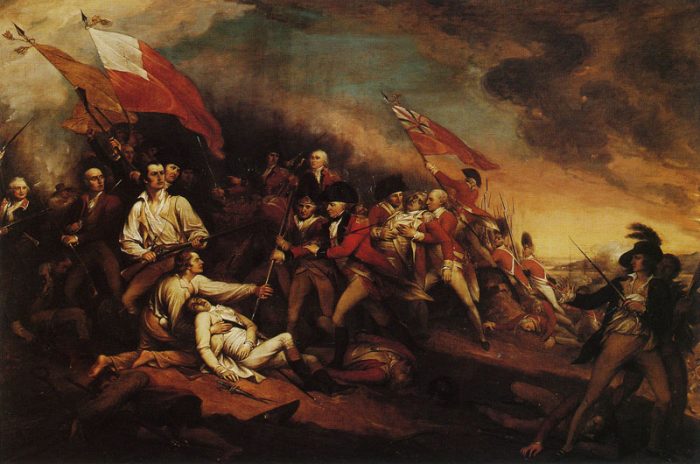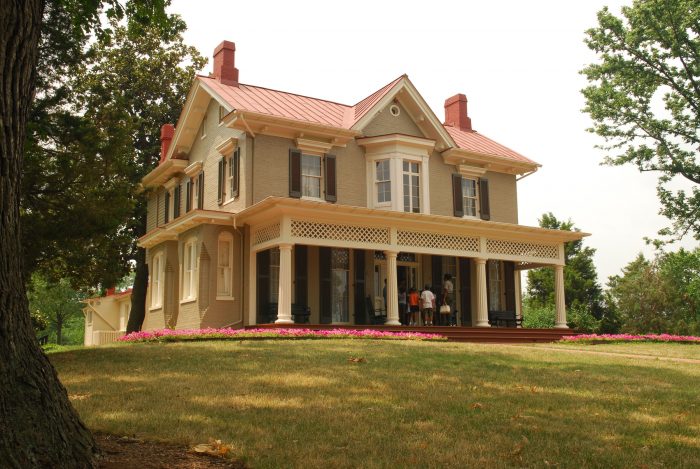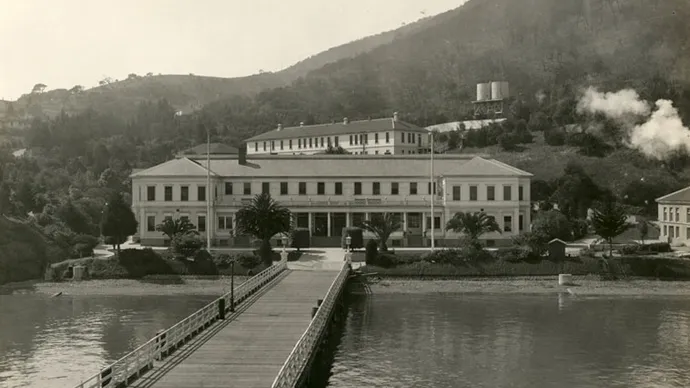The Archetypal American Road Trip and the Power of Memory
In historical sites across the country, there is a sense of the immediacy of history that can’t be found elsewhere.
There is nothing quite like the open road in the summer heat. Over the course of my lifetime, I’ve accumulated a list of unforgettable road trip destinations: places that reinforced my belief in the power of the immediacy of history.
I hope you were able to take some time this summer to travel, whatever your itinerary might be—but should you need inspiration for next year, I’d like to offer a few recommendations.
Among my most quintessential road trip memories is an overnight drive from D.C. to Boston. My college friends and I drove into the city at dawn, exhausted—but I wouldn’t let anyone go to sleep just yet. I was eager to follow the iconic Freedom Trail: a collection of museums, churches, cemeteries, and more that tell the story of the American Revolution.

Painting by John Trumbull of the Battle of Bunker Hill. 184.2 x 274.5 cm, Oil on canvas Wadsworth Atheneum, Hartford, CT
I had a map, which I studied carefully until I realized that all you had to do was look down and follow the red bricks. We passed through the Granary Burying Ground, Boston’s third-oldest cemetery, where the remains of John Hancock, Samuel Adams, Paul Revere, and other revolutionary figures are buried. We stood where the Battle of Bunker Hill was fought some two centuries earlier; we looked, bleary-eyed, at the cobblestones marking the site of the Boston Massacre. I will never forget what it felt like to stand half-awake in the early morning light and marvel at the founding of a country.

Cedar Hill, the Washington, D.C. home of Frederick Douglass. The house is now maintained by the National Park Service as a U.S. Historical Site.
It was not unlike the sense of promise I felt visiting Cedar Hill, Frederick Douglass’ estate: there is a palpable sense of history in places where people denied the blessings of liberty spent their lives insisting on freedom—for a nation, and eventually, for themselves. The first time I ever went to Cedar Hill, I was a freshman at Howard. I didn’t have a car, and the metro didn’t reach that far into Southeast D.C. back then. I took six buses and walked three miles. It was important to me to see it, to stand in the place where so much of Douglass’ thinking and writing played out in the later years of his life, to look out at the rest of Washington and imagine the life of a man who insisted on a freer and fairer America.
In the decades since, Cedar Hill has become a pilgrimage site for me. It was the first place I took my daughters when my family moved back to Washington in 1989. It was part of what prompted them to institute a rule that I only take them to two historical sites per family trip, but I like to think that it’s a memory they cherish all the same.
I remember, too, what a place can do to reveal a history not yet studied. In the eighties, I lived in Los Angeles as a curator at the California African American Museum. I was studying the history of race in America, and I wanted to have a clear picture of the construction of race in California in particular. As part of that mission, I found myself on Angel Island in San Francisco Bay, standing on what was once an immigration station. Between 1910 and 1940, an estimated 500,000 immigrants passed through the island, the vast majority from Asia. Angel Island soon garnered a reputation as “the Ellis Island of the West.”

Angel Island Immigration Station, formally United States Immigration Station at Angel Island, was the principal immigration facility on the West Coast of the United States from 1910 to 1940.
The island began filtering immigration to the United States amid extreme anti-Asian sentiment: a suite of anti-Chinese immigration laws was passed in the 1880s and ’90s as part of the backlash to the uptick in immigration driven by labor needs for the gold rush and the construction of the Central Pacific Railroad. In 1907, the U.S. and Japan reached an agreement for Japan to voluntarily limit the immigration of Japanese laborers. In exchange, the U.S. permitted the immigration of spouses of Japanese immigrants already residing in the states. Even amid hostile legal and social circumstances, hundreds of thousands of immigrants endured prison-like conditions on Angel Island before they were permitted to enter the country. The immigration station was moved inland when a fire burned the administration building to the ground in 1940, but the detention centers and a new museum still hold evidence of the weeks, months, and sometimes years immigrants spent there, awaiting their chance at a new life.
Standing in these places gave shape to history in a way that words never could. These sites—and so many others—don’t offer a mere explanation of fact, they invite a feeling. It’s the same feeling that so many Smithsonian museums and galleries hope to elicit: an understanding far more vivid than what can be found in the pages of a history book, and a sense of empathy for the people who came before us. I hope you find that same feeling this summer, no matter how near or far your travels take you.
Posted: 28 August 2023
- Categories:







